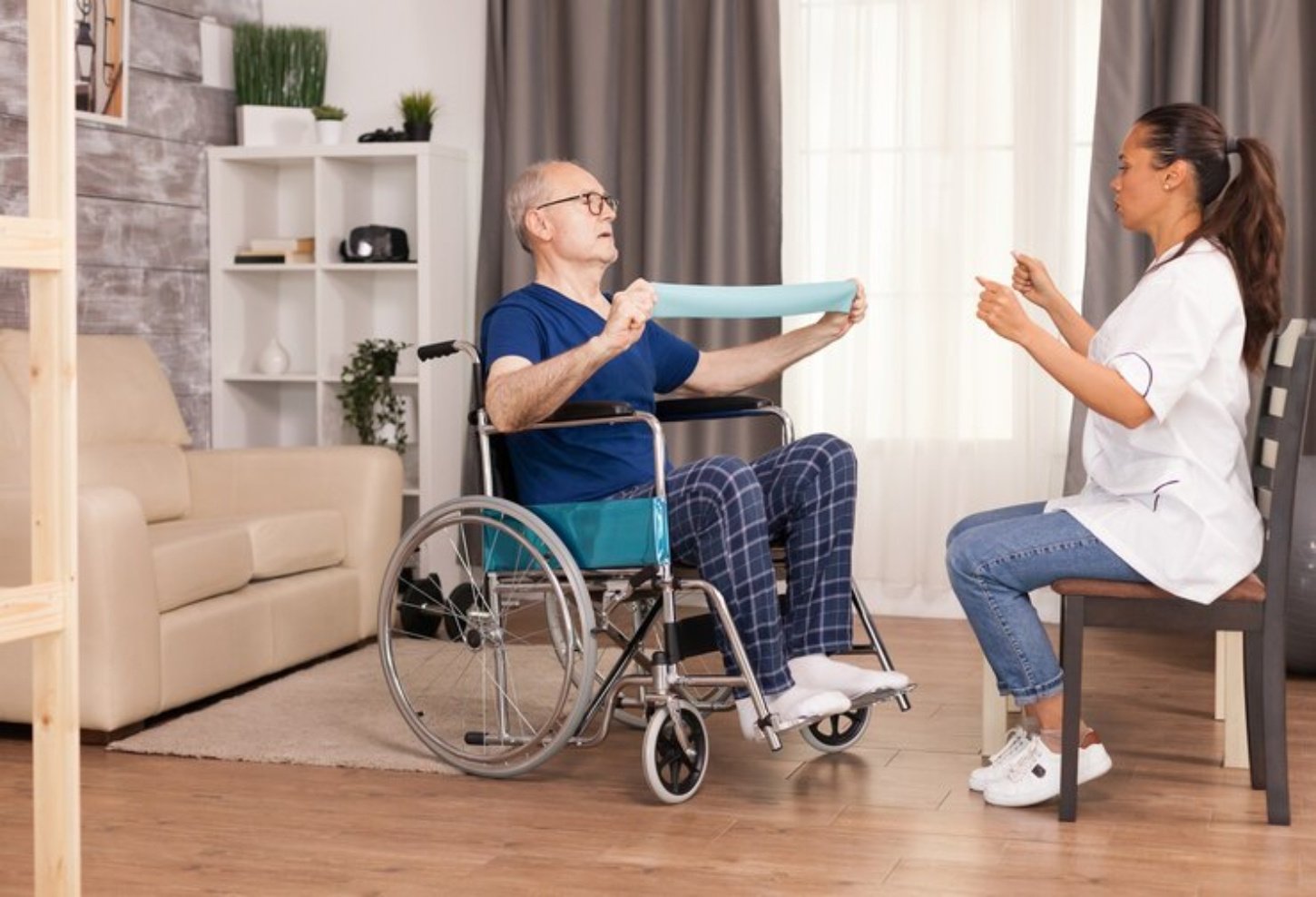
Pain is a common challenge among residents in skilled nursing facilities (SNFs). While short-term stays at these centers help patients recover after an illness, injury or surgery, various factors contribute to and amplify the prevalence of acute and chronic pain among residents. Whether due to age, disability or a specific health challenge, poorly managed pain has a direct impact on a resident's quality of life and can significantly affect the rehabilitation process — it can also impact a SNF's profitability.
A pain management program is an investment in patient satisfaction that can also improve financial performance. Let's explore the importance of pain management in skilled nursing facilities and learn the many benefits this care can bring to your business operations.
Pain Management: A Critical Component of Quality Care in SNFs
No one wants to live a life in pain. Yet, chronic pain impacted over 24% of the U.S. population in 2023. Older adults are particularly vulnerable, as high-impact pain is the most common, incapacitating and costly condition among this age population.
Skilled nursing facilities must take a systematic approach to pain management to adequately address the needs of their residents. What patients believe and understand about their treatment, especially in relation to pain, impacts their outcomes. Patients who feel that their symptoms are being poorly managed or not adequately treated will struggle with negative perceptions and attitudes about their overall care, which can lead to:
- Continued discomfort
- Immobility
- Insufficient social interactions
- Mental health decline
- Worsened patient outcomes
- Increased costs
Since perceptions and beliefs play a huge role in quality care, effective pain management is a clear requirement in health care. Improving patient outcomes through pain programs can transform your residents' attitudes to and perceptions of pain. When residents are confident that their care is a priority, their beliefs can have a direct impact on the success of the overall rehabilitation process.
Pain Management Benefits for Skilled Nursing Facilities
With so many patients struggling with debilitating pain, especially residents of SNFs, pain management continues to be an issue of critical importance. You undoubtedly empathize with residents and wish to improve their quality of life, yet these are not the only benefits of addressing their pain. There are many other practical advantages of implementing a well-formulated pain management program at your SNF — this includes benefits to patients, physicians and your care team:
- Enhances resident satisfaction: When patients feel heard and see your team prioritizing pain management, this leads to better patient experiences and higher satisfaction scores.
- Assists recovery: A pain management program helps patients participate fully in their treatments, so pain is not a limiting factor to rehabilitative progress.
- Helps you meet regulatory compliance: Regulatory compliance ensures your residents receive safe and effective treatment. A pain management program standardizes your methodology and keeps everyone on the same page regarding best practices.
- Reduces medication reliance: A specialized program is less about prescribing pain medication and more about offering targeted pain relief. Pain management arms your team with advanced pain relief strategies
The ROI of Pain Management in SNFs
While it is difficult to put a dollar value on pain relief, the core of your business is patient care. Relieving pain and improving patient outcomes directly correlate to your bottom line.
While implementing an effective pain management program is an investment, there are many ways a well-run pain management program can help your SNF attain greater profitability and return on investment (ROI):
- Cost reduction: Pain is one of the leading causes of hospital readmissions, emergency room visits, prolonged stays and additional treatments and therapies. Timely and efficient pain management can result in fewer interventions and medical resources, leading to cost savings.
- Improved patient outcomes: Addressing pain effectively results in better mobility and the ability to participate more fully in the recovery process. That means a decreased risk of related health care challenges, including falls, pressure ulcers, cardiac events, infection and even mental health concerns.
- Staff efficiency and satisfaction: By prioritizing a higher level of patient care and improving the efficiency of your operations, you may be able to attract and retain nurses and care staff who bring improved value to your SNF.
- Potential improved reimbursements: The value-based care model requires a significant focus on each patient's unique needs. Optimizing your pain management program could improve your quality scores and increase potential reimbursement benefits.
Pain Management Strategies for Post-Acute Care
While accurately diagnosing and treating pain may be challenging, establishing an effective pain management program ensures your residents receive the treatment they need and deserve. The success of your efforts depends on how well your multidisciplinary team works together.
You must establish systems and consistent pain management strategies demonstrating your commitment to quality care, safety and cooperation.
Personalized Pain Management Plans
While many SNF residents struggle with chronic pain, identifying and diagnosing pain is a highly personalized process. Treatment may involve various options, including pharmacologic and non-pharmacologic interventions. Pain management requires interdisciplinary collaboration to create a clear pain plan that effectively addresses the patient's needs.
Assessment and Monitoring
Pain management is a delicate balance. Many physicians are understandably wary when prescribing pain medications, but undertreating pain may result in inadequate relief and poor patient outcomes. Regular assessment and monitoring to evaluate pain levels will help you find the right approach as you monitor pain, track improvements and adjust care plans as needed.
Integrating Alternative Therapies
A structured pain management program is less about pain medications and more about finding the right blend of therapies and treatments to bring holistic relief. By integrating non-drug interventions into your patient's care plan, such as physical therapy or occupational therapy, you can minimize the risks associated with opioid use and other medication side effects.
Contact Medrina and Invest in Pain Management for Skilled Nursing Success
Pain management and patient care go hand in hand. If you are ready to invest in a high-quality pain management program at your skilled nursing facility, Medrina can help.
We take a holistic approach to pain management, helping SNFs navigate the complexities of this growing field so that your team can deliver the best care. We offer expertise in aligning your pain management strategies with value-based care, such as the Patient-Driven Payment Model (PDPM). Our goal is to improve patient outcomes and the financial performance of your SNF.
If you run an SNF or post-acute care facility, now is the time to invest in effective pain management. Contact Medrina to learn how our services can add value to your care center. We would be happy to discuss your unique needs and challenges as we help you develop specialized pain management solutions.

Chief Clinical Officer
Dr. Cowling is Board Certified in Physical Medicine and Rehabilitation, with a specialized focus on Subacute Rehab, Orthotics and Prosthetics, and the non-surgical management of Musculoskeletal Injuries. He graduated from Michigan State University College of Osteopathic Medicine and completed his residency and specialty training in PM&R at the University of Wisconsin.
Dr. Cowling has a deep passion for teaching and advancing the field of Physiatry in post-acute care. As Chief Clinical Officer at Medrina, he works to spearhead the advancement of physician protocols, education, and communication within the clinical team.
Other Articles
The Impact of Interdisciplinary Care Teams on Post-Acute Care Success
-1.png)





